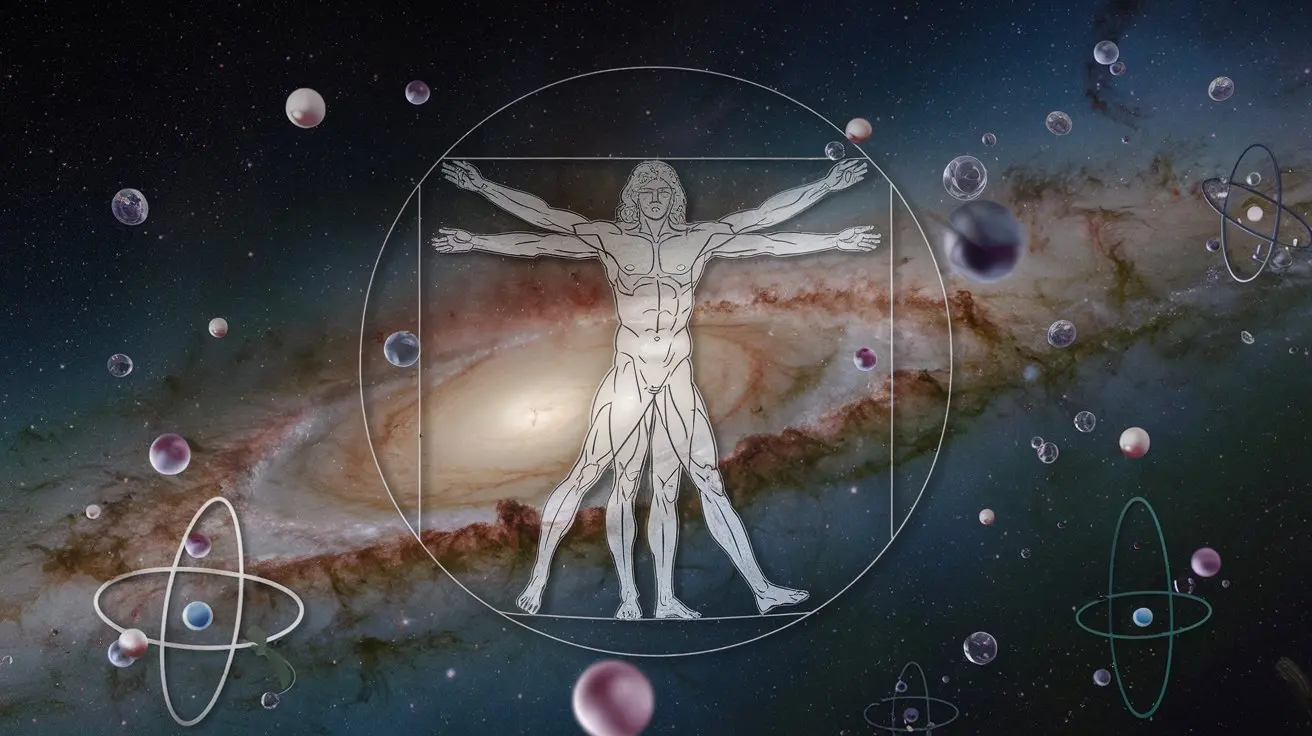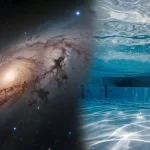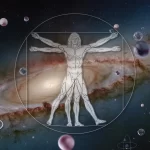Introduction
In this blog we will be referencing the following blog post: Dark Matter and Dimensions. Solved?
Okay, let’s dive in. In our quest to understand the universe, we’ve come across some mind-bending ideas, right? One of those is the concept of Relative Dimensional Levels, or RDLs, and Dimensional Boundaries. Essentially, this framework, as the referenced blog post brilliantly puts it, invites us to think of dimensions not just as those familiar spatial axes (up-down, left-right, forward-backward), but as “layered dimensional levels”.
So, imagine reality in layers, like a cosmic cake! We, as observers, exist at a certain layer, our own RDL (0), where we perceive and interact with our everyday surroundings. But here’s where it gets interesting: there could be layers above us, RDL (+1), and layers below us, RDL (-1), each with its own unique characteristics. And these “Dimensional Boundaries” are like the frosting between the cake layers, the crossover points where the rules of physics might bend or change.
Now, in the referenced blog post, there’s this fascinating thought experiment about observers on an electron. It’s a cool way to wrap our heads around these concepts, but here’s the thing: it was a bit of an oversimplification. And that’s what we’re going to explore and correct in this blog post. You see, when we try to imagine beings or entities we can’t really grasp, we often tend to “humanize” them. We give them familiar traits to make them relatable. But the truth is, we have absolutely no clue what these entities are like or how they experience their environment.
Think about it: even when we ponder about aliens in our own universe, we often picture them as humanoid, right? Similar height, similar limbs… But is that really plausible? Our own planet’s history tells us that life can take on the most diverse forms. So, to assume that entities at different RDLs would be just like us, only smaller or bigger, is probably way off the mark.
In this blog post, we’ll delve deeper into why that electron observer thought experiment, while helpful, needs a bit of a reality check. We’ll explore the challenges of imagining perception across these Dimensional Boundaries and ponder the truly alien nature of existence at different RDLs. Ready to have your mind bent a little? Let’s go!
The Oversimplification of Entities
Alright, let’s zoom in on this “humanizing” tendency. The referenced blog post uses this technique, and to be fair, it does make the initial explanation easier to digest. But we need to recognize it for what it is: a simplification.
Why do we do this, though? Well, when we try to imagine something totally unfamiliar, our brains often reach for the familiar. It’s like when we first started exploring the ocean depths; we might have imagined sea monsters that were just exaggerated versions of creatures we already knew. It’s a natural inclination, but it can also limit our thinking.
Think about how we often portray extraterrestrial beings. Movies, books, even scientific illustrations often depict them as vaguely humanoid. They’ve got a head, two arms, two legs, similar height… you get the picture. But here’s the thing: when we look at the history of life on our own planet, it’s a history of incredible variety. From microscopic bacteria to colossal whales, from crawling insects to soaring eagles, life has found countless ways to adapt and thrive.
So, why would we expect life on another planet, or in another dimension, to conform to our specific body plan? It’s a bit arrogant, isn’t it?
And this is where it connects to the RDLs discussion. Remember those electron observers at RDL(-1)? As we’re discussing, we have no idea what they are like. We have no idea how they perceive or experience their environment.
The referenced blog post uses the electron observers to help us understand how perception can change at different RDLs, and that’s great. However, it is absurd to think that entities at those RDLs would be anything like us. They are not just miniature or gigantic versions of ourselves. They are something else entirely, something we can’t even begin to imagine.
The Challenge of Perception Across Dimensional Boundaries
Now, let’s tackle a tricky question: If these RDLs are so different, how would perception even work across them? This is where the concept of Dimensional Boundaries becomes really important. As the referenced blog post explains, these boundaries aren’t like solid walls, but more like zones where the fundamental forces themselves might shift.
Think about it: what if gravity, as we know it, behaves differently or doesn’t even exist at another RDL? What if electromagnetism, the force that governs light, changes its tune?
This brings us to an excellent example: sight. How do we experience sight here at RDL(0)? Well, we see because light, in the form of photons, bounces off objects and into our eyes. Our eyes then translate that information into signals our brain interprets as “sight”. Simple enough, right?
But what about those hypothetical electron observers at RDL(-1)? As we’re exploring, photons, as we understand them, would be a force or energy much larger than those entities themselves. Imagine trying to perceive something when the very thing you’re using to perceive it is overwhelmingly powerful! In that environment, light as we know it wouldn’t interact the same way, which is why we need sensors and detectors to observe the subatomic world.
And what about sight at RDL(+1)? Here’s where things get truly mind-boggling. Light travels incredibly fast, right? It’s the speed limit of the universe! But as we’re considering, even at that speed, it would take light about 100,000 years to cross our galaxy. Now, imagine the scale of whatever lies at RDL(+1). From that perspective, the speed of light might seem incredibly slow! It’s like us watching a snail crawl across a football field; it’s moving, but it’s going to take a while to get anywhere.
So, you see, the simple act of seeing becomes incredibly complex when you start thinking about these Dimensional Boundaries. It highlights just how different perception, and reality itself, could be at other RDLs.
Implications and Speculations
So, where does all this leave us? Well, it definitely throws a wrench in our assumptions about what might exist at different RDLs. It’s important to emphasize that it’s not as simple as saying entities at RDL(-1) are just tiny versions of us, or that entities at RDL(+1) are giants. They are likely something fundamentally different, something our limited RDL(0) minds struggle to grasp.
This brings up some fascinating, and quite frankly, mind-blowing implications. If perception and even the fundamental forces change across Dimensional Boundaries, what kind of existence is even possible at these other levels? What does “life” even mean in those contexts?
It also forces us to consider the connections between RDLs. We know there are interactions. For example, it’s worth noting that photons (light) definitely affect electrons. The movement of electrons creates photons. So, there’s a clear link between our RDL(0) and RDL(-1). This makes you wonder, what forces or phenomena from RDL(+1) might be influencing us at RDL(0)? Are there “dark” influences we can’t perceive, just like the electron observers in the thought experiment where they could not perceive the water molecules?
And now, for a truly wild thought: We can even ask, “Perhaps there is no such thing as entities at either RDL(-1) or RDL(+1)?” It’s important to acknowledge how controversial this is, comparing it to suggesting that we might be the only life in the entire universe. It’s a sobering idea, and definitely not the most popular, but it highlights the level of uncertainty we’re dealing with here.
This section is more about raising questions than providing answers. It’s about pushing the boundaries of our imagination and acknowledging how much we don’t know.
Conclusion
To wrap things up, let’s bring it all together. The key takeaway here is that our understanding of entities and their perception at different RDLs is incredibly limited. While the thought experiment provides a helpful starting point for visualizing these complex ideas, it’s crucial to recognize that it was indeed an oversimplification.
We often fall into the trap of projecting our own experiences and characteristics onto the unknown. Whether it’s imagining aliens as humanoid or assuming entities at other RDLs are just scaled-up or scaled-down versions of ourselves, this tendency can hinder our ability to truly grasp the potential diversity of reality.
As we’ve explored, Dimensional Boundaries introduce even more layers of complexity. The way forces, energy, and even something as fundamental as sight are perceived could be radically different at other RDLs. This challenges our basic assumptions about existence and what is possible.
Ultimately, this exploration highlights the need for continued curiosity, open-mindedness, and a willingness to embrace the unknown. The universe is vast and full of mysteries, and the concept of RDLs and Dimensional Boundaries invites us to consider that reality might be far stranger and more wonderful than we ever imagined.






